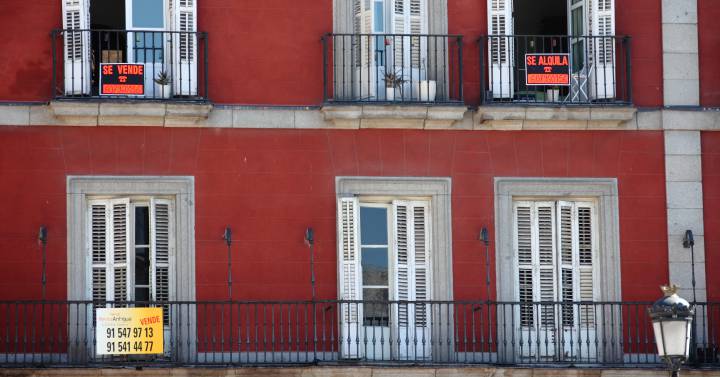After months of unstoppable increases, house prices will begin to moderate in the remainder of the year. This is how Bankiter forecasts it, which estimates a rise of around 1% for the second half of 2022 and for 2023. This represents a slowdown compared to 2021, when the rebound was 6.4%. The bank specifies that, despite the significant rebound last year, they still do not see signs of overheating in the sector, since the effort rate is below the historical average and the balance between supply and demand is maintained.
The effort rate of families when paying a mortgage, that is, the percentage of disposable income that they dedicate to paying the installment was 33% at the end of last year and the forecast is that it will remain at levels of 35%, the historical average of recent years.
Bankiter’s forecasts coincide with those of other analysts. Tinsa, for example, has also highlighted in its last two reports that there are already signs of a slowdown in the symbolic market as a result of persistent inflation and reduced expectations of economic growth. Gesvalt, another consultant and appraiser, maintains that prices will stabilize throughout the second half of the year, although they are more cautious in their estimates due to the prevailing economic and political instability.
In any case, the decrease in housing is conditional on the reduction in the prices of construction materials. According to experts, from now on the increase experienced during the last two years will be reversed, until the extra cost is absorbed in 2025.
The average price of homes maintained an unstoppable rise until the beginning of the summer. According to Tinsa data, in July there was an interannual increase of 8.9% and 0.9% compared to June. Even so, they were 20.5% below the boom recorded in December 2007. The metropolitan areas, along with the Mediterranean coast, were the ones that became more expensive in that month, followed by capitals and large cities, which grew less intensely than June.
Regarding the balance between supply and demand, Bankiter estimates that there is a structural demand for housing of around 100,000 units per year, distributed between the 70,000 that would come due to the creation of homes and 30,000, due to foreign demand. In the case of supply, the number of housing starts is at a similar level and the forecast is that this threshold will be exceeded this year. Consequently, by 2023 the supply deficit would be covered.
The bank foresees a certain cooling in real estate activity. Housing transactions could fall by 5% this year, after reaching maximum levels of 15 years last year, when more than half a million sales were made. In turn, Tinsa expects a reduction in the granting of mortgages as a result of the turn of the rudder in the monetary policy of the European Central Bank.
–


